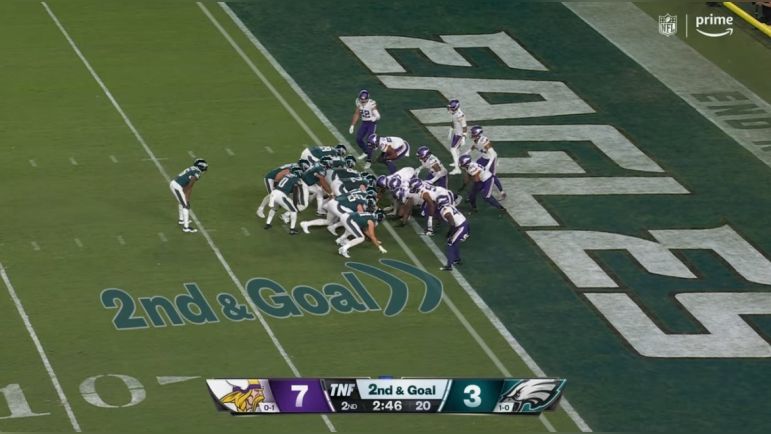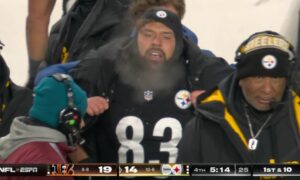How do you stop what cannot be stopped? That’s the question plaguing every defensive coordinator about the Philadelphia Eagles’ “Tush Push.” Their short-yardage cheat code that’s hardly been stopped, QB Jalen Hurts sneaks ahead while being pushed from behind to pick up the first down or barrel his way into the end zone. Pittsburgh Steelers defensive coordinator Teryl Austin admits he doesn’t have a great solution to stop it.
“That’s a hard one,” Austin told reporters via a team-issued transcript. “Just physics. They know where they’re going, they’ve got a yard to go, they get a head start because they know the count. There’s no way really to get the heads up on them in terms of when we can attack them or get a jump-start on them. That’s probably why that play is so successful.”
The Tush Push began several years back and has been a staple of the team’s short-yardage package. Other teams have copied the approach, including the Steelers, but none have found the success Philadelphia’s enjoyed. Instead, they’ve been plagued by miscues and injuries.
“They’ve got a level of expertise that others don’t,” Austin said. “They just do a great job of it. I mean, I wish I could give you an answer like why. I think they do a great job.”
QB Jalen Hurts is tied for the NFL lead with 34 carries when his offense needs one yard this season. While not every one of those have come via the Tush Push, most have, and he has 28 first downs on those 34 attempts. No one else has more than 25 and only one player, Los Angeles Rams RB Kyren Williams, has more than 18.
While Austin is waving the white flag, the truth is nobody has a good response. Or else it would’ve been implemented by now. Short of banning the play, which has been modified but not expelled, the Eagles will continue to have an auto-yard call built into their playbook. At least, so long as Jalen Hurts is the team’s quarterback. His ability to squat 600 pounds isn’t the sole reason why the play works but it sure doesn’t hurt.
For Pittsburgh, the best way to combat the play is to avoid those situations in the first place. Keep Philadelphia out of third-and-short and away from the 1-yard-line. Of course, that’s easier said than done. But it sure beats defending the Tush Push itself.








